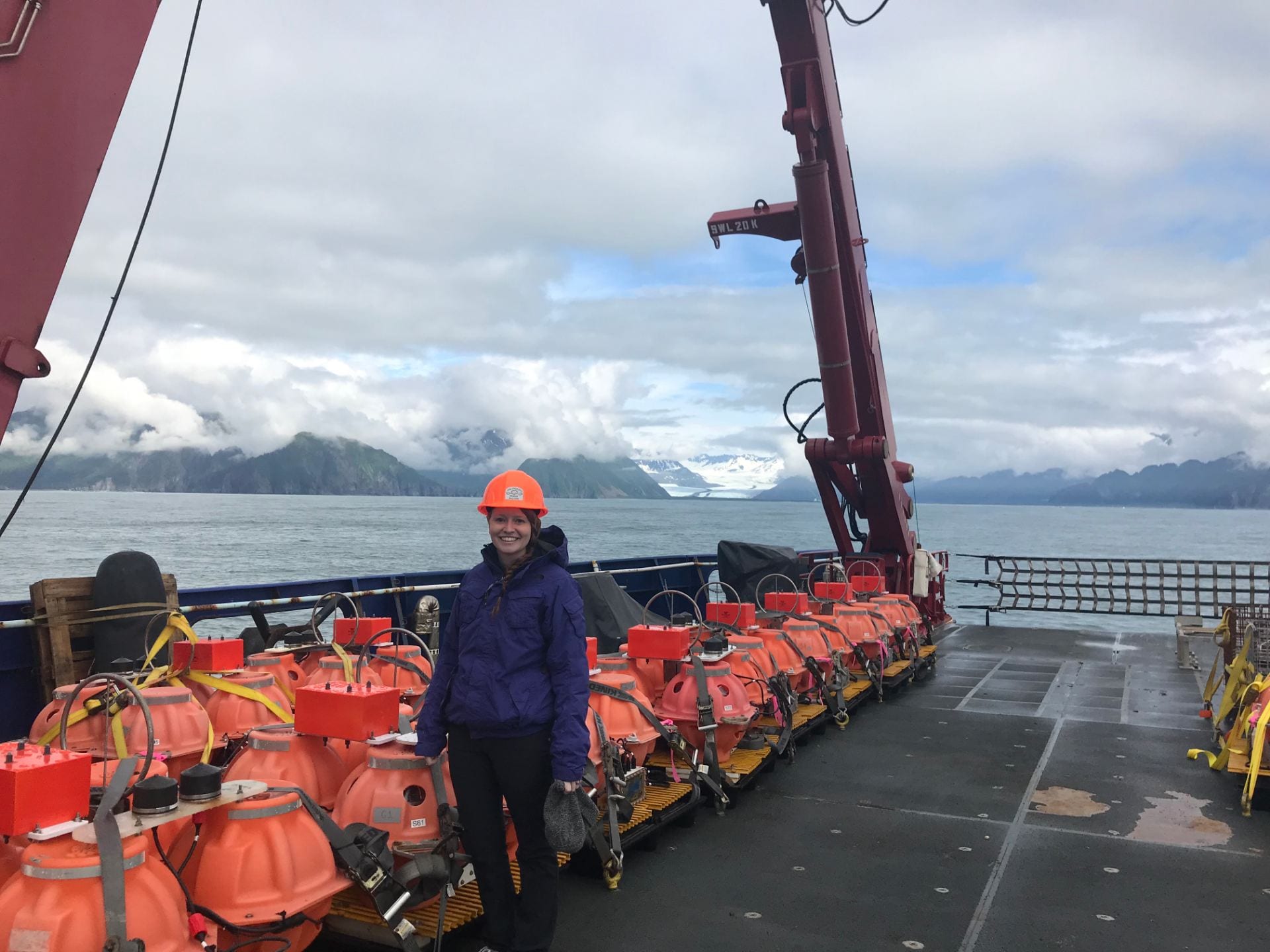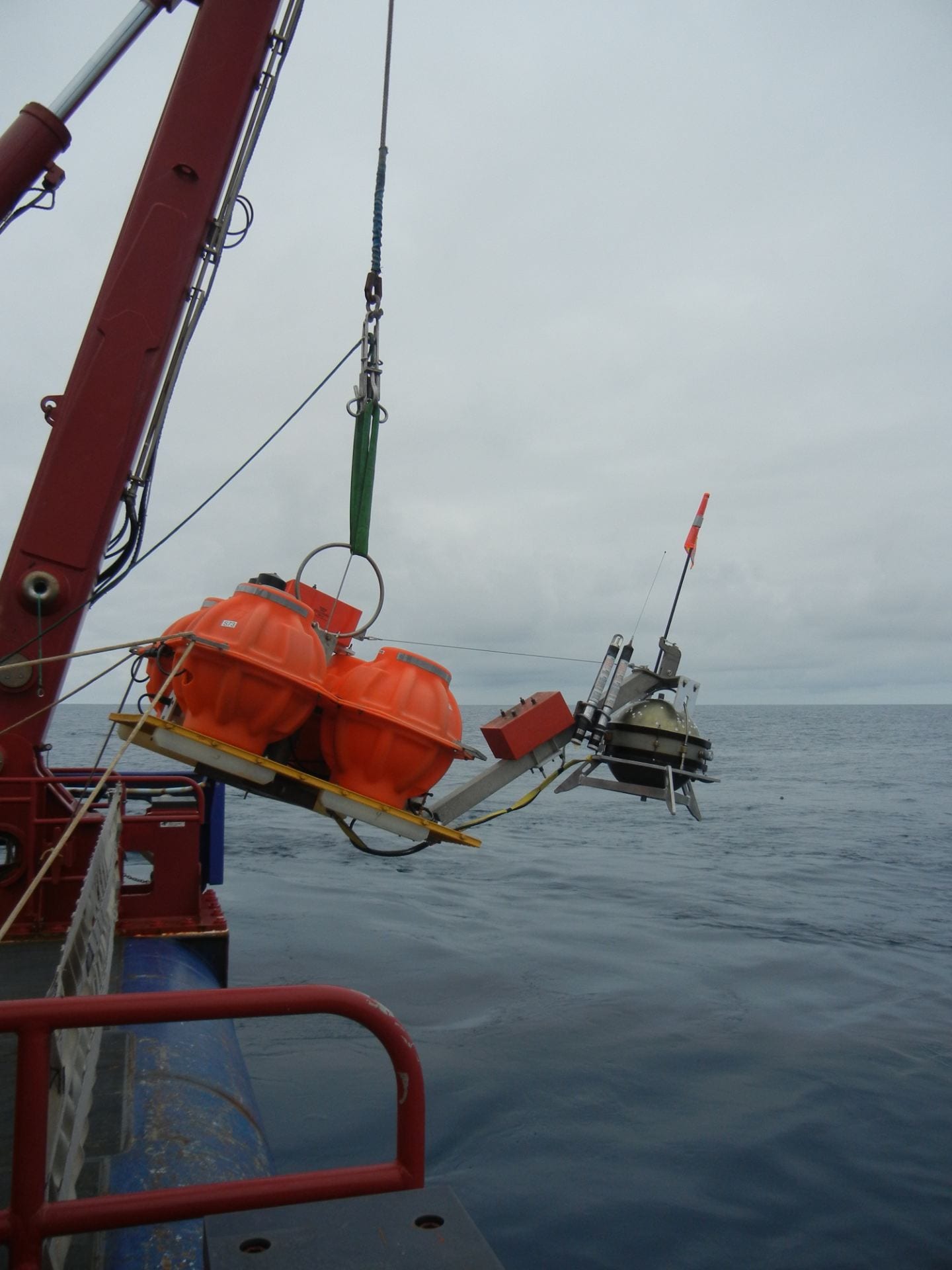ASEISMIC SLIP TRANSIENTS
Slip on faults occurs as a spectrum, ranging from stably sliding (aseismic creep) to rapid ruptures (earthquakes). I am interested in the interplay of seismic and aseismic slip because 1) this determines the largest earthquake a fault can host, and 2) aseismic slip transients may trigger or nucleate large, damaging earthquakes. In order to better understand the fundamental relationship between aseismic slip and earthquakes, transient aseismic slip (or slow slip events [SSEs]) needs to be reliably detected and located. SSEs are too slow to generate seismic waves and are generally detected with GPS. However, many slow slip events are out of the range of GPS networks (i.e., located far offshore, too small for detection, etc.). This observational limitation may be improved using related secondary microseismicity, such as tremor, repeating earthquakes, and low-frequency earthquakes (LFEs), to infer the location of shallow offshore SSEs.
I am interested in improving the detection of transient aseismic slip using another form of microseismicity – near-repeating earthquakes (sometimes called short-term or burst-type) – which are closely spaced or partially overlapping events concentrated in time. Instead of creep, near-repeating earthquakes have been associated with transient aseismic slip, including afterslip and precursory slow slip. We propose that sequences of near-repeating earthquake families concentrated in time and space can be useful seismic indicators of aseismic slip transients, similar to tectonic tremor and LFEs. This is particularly useful for small, intraplate aseismic slip transients or in regions that lack geodetic coverage. We are evaluating the spatiotemporal relationship between near-repeating earthquakes and transient aseismic slip at the northern Hikurangi subduction zone, New Zealand, the San Jacinto fault zone, southern California, and the Aleutian subduction zone, Alaska.
HOBITSS Experiment, Hikurangi Margin, New Zealand
The Hikurangi Ocean Bottom Investigation of Tremor and Slow Slip (HOBITSS) experiment deployed absolute pressure gauges and ocean-bottom seismometers (OBS) offshore of Gisborne, New Zealand between May 2014 and June 2015 to record a shallow, offshore slow slip event and related microseismicity. The array recorded an offshore slow slip event in September/October 2014. Using the ocean-bottom seismic data we found burst-type or near-repeating earthquakes associated with an upper plate fracture network above a subducted seamount after the geodetically detected slow slip event. We propose that the 2014 Gisborne slow slip event caused fluid migration from over-pressured sediments down-dip of the seamount into the upper plate fracture network, triggering further aseismic slip on preexisting faults. This is promising that near-repeating earthquakes may be common seismic indicators of shallow slow sip in other regions of subducted oceanic relief (Shaddox & Schwartz, 2019).
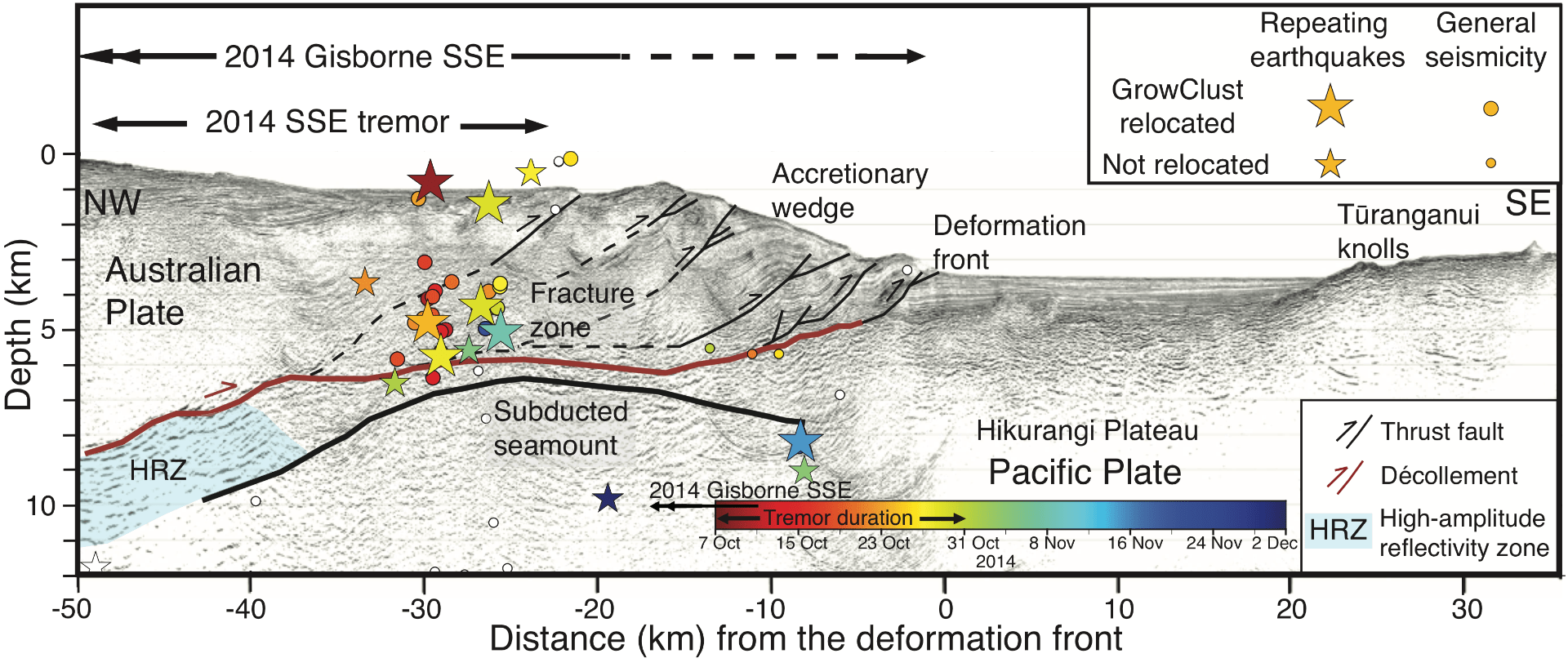
We are currently performing a follow-up study during another SSE in April 2019 and have similarly found near-repeating earthquake activity concentrated at the subducted seamount, mostly after the interplate SSE. It appears that fluid migration and seamount subduction are major influences on the mechanics of shallow slow slip and microseismicity at the northern Hikurangi margin, and near-repeating earthquakes are a useful proxy for transient aseismic slip.
Anza Segment of the San Jacinto fault zone, Southern CA
To demonstrate the utility of near-repeating earthquakes as a proxy for transient aseismic slip, we investigate the occurrence of near-repeating earthquake families during aseismic transients independently detected by borehole strainmeter (BSM) data in the trifurcation area of the San Jacinto fault zone near Anza in southern California. We find that all 3 Mw > 4.5 earthquakes occurring in this region during the time period studied (2010-2016) have postseismic afterslip signals on BSM data and are accompanied by near-repeating earthquakes and elevated seismicity rates (Shaddox et al., 2021). We use the location of near-repeating earthquakes to infer the geometry of faults hosting afterslip and find that aseismic afterslip occurs at depths between 7-14 km, on all three major strands of the San Jacinto fault zone, and on several different fault segments both on and off the mainshock fault. A local Mw 4.9 earthquake occurred in April 2020, at the conclusion of our study, and we use this event to validate our hypothesis that afterslip accompanied by near-repeating earthquakes follows all moderate magnitude earthquakes in this region. We also identify and locate a spontaneous aseismic transient in 2015 using near-repeating earthquakes and a strain signal on the nearest BSM station. This demonstrates that aseismic slip in this region is not restricted to afterslip and that near-repeating earthquakes are generated by spontaneous as well as triggered aseismic slip (i.e., afterslip). We conclude that like LFEs, near-repeating earthquakes are a useful proxy for aseismic slip transients. This is particularly useful in regions that are not tremorgenic. In addition, detecting and analyzing near-repeating earthquakes following local moderate-sized events can provide insight into whether aseismic slip occurs on main fault strands or on splay faults within damage zones.
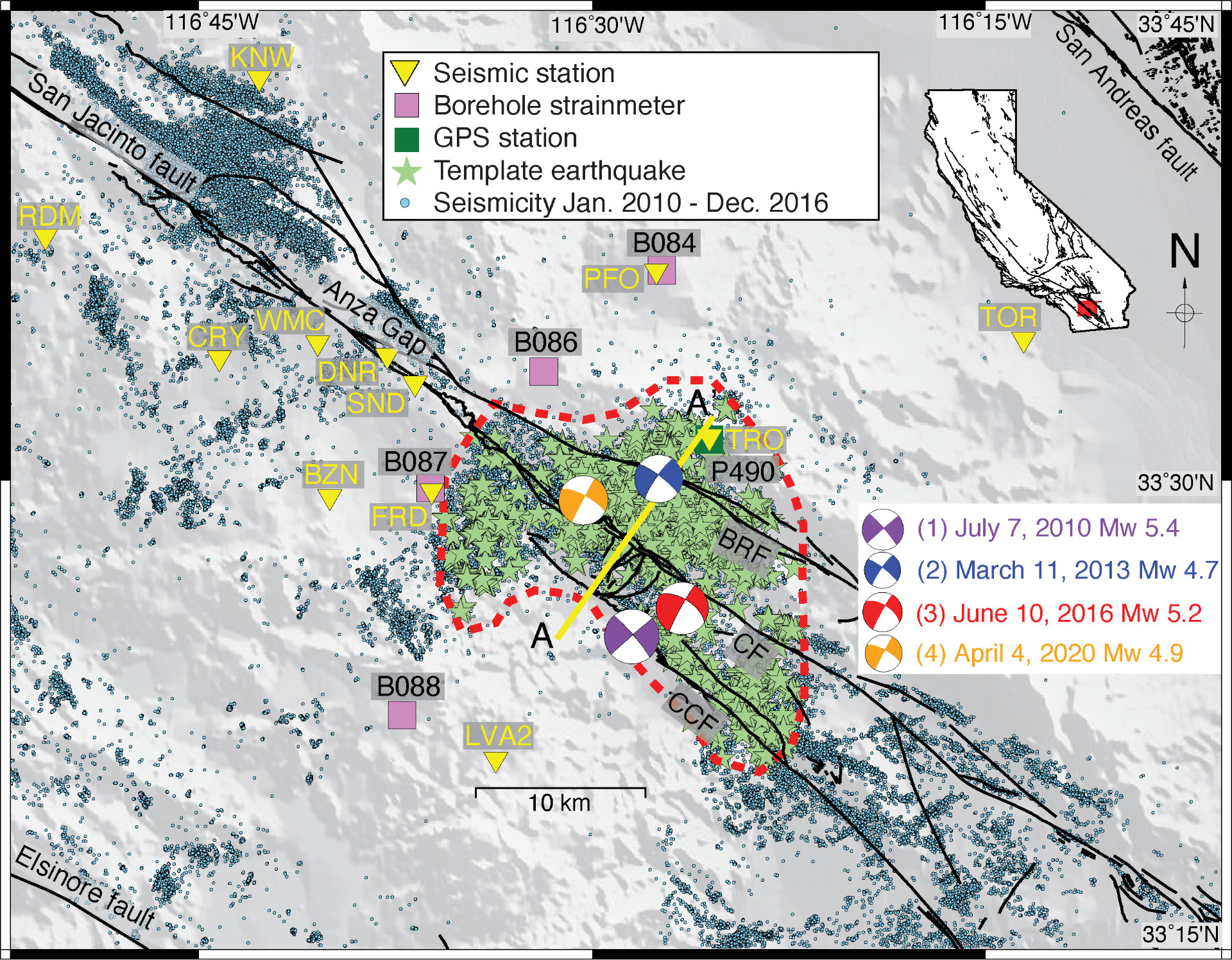
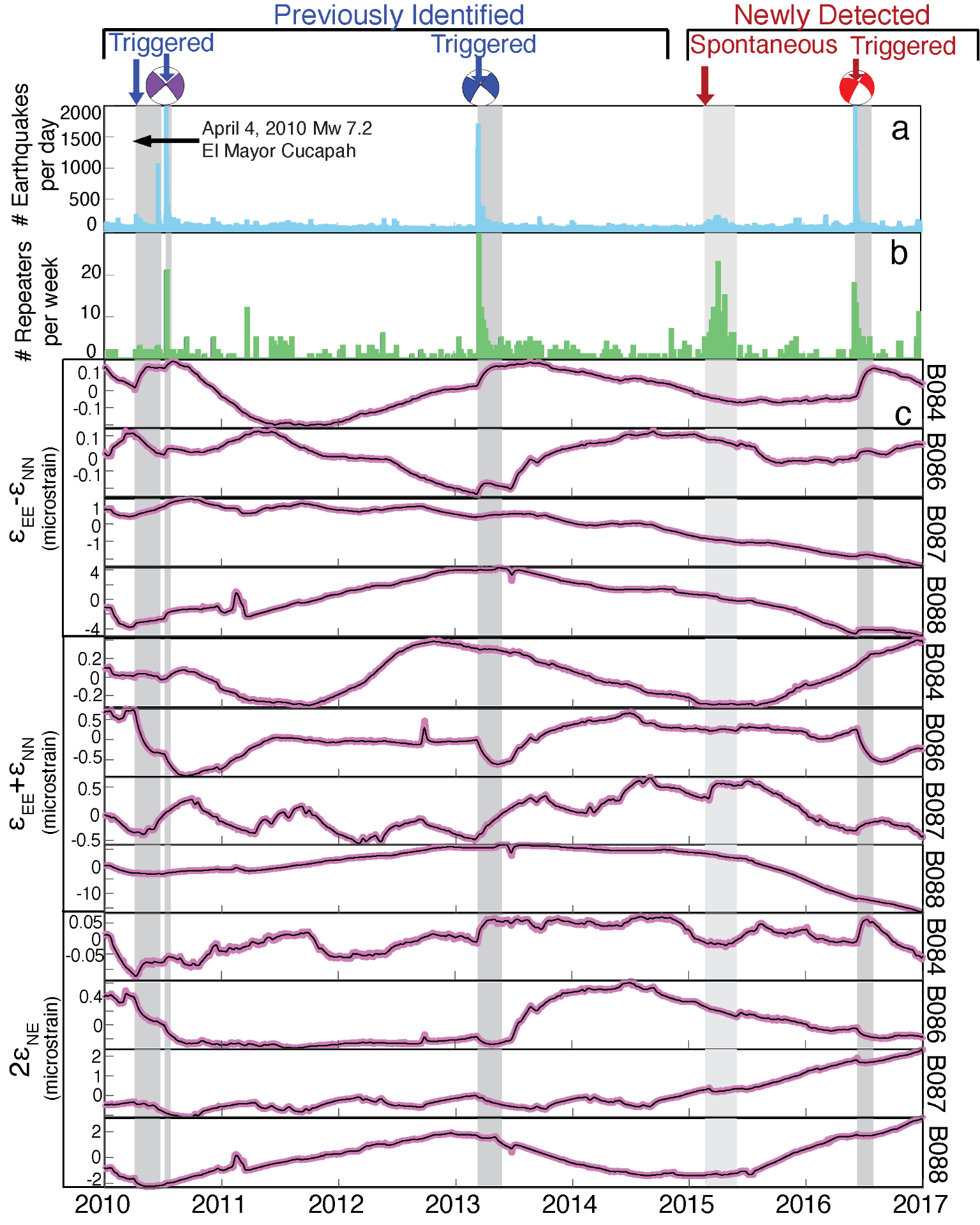
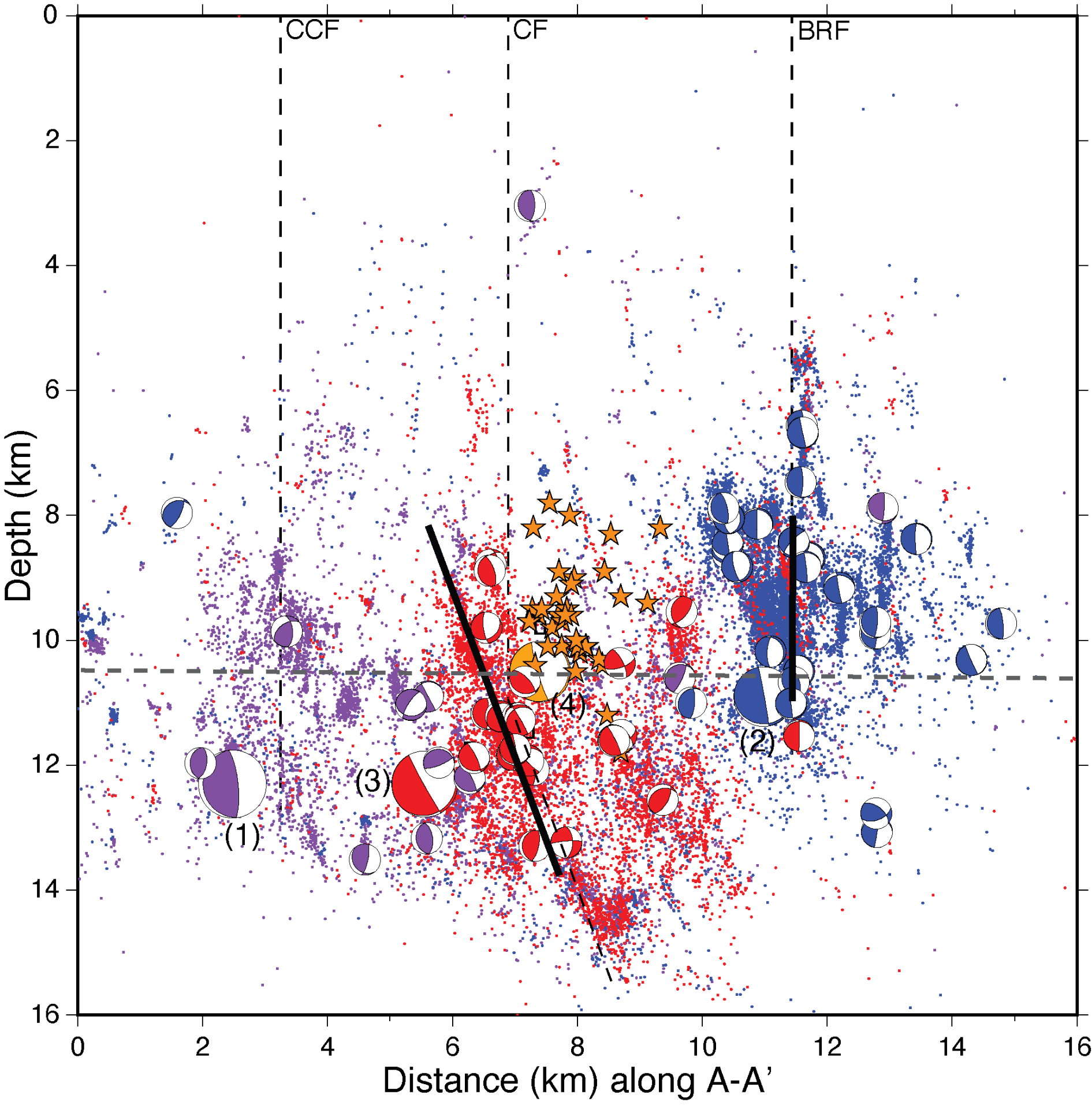
Aleutian subduction zone, Alaska
We are now looking for near-repeating earthquakes and other microseismicity related to transient aseismic slip in the Aleutian subduction zone where the Alaska Amphibious Community Seismic Experiment (AACSE) deployed an array of land and offshore instruments from May 2018-August 2019. I was part of Leg 2 of the deployment because I am particularly interested in the transition between the weakly coupled Shumagin segment (“Shumagin Gap”) and the locked Semidi segment. It is possible that the Shumagin Gap hosts shallow, offshore SSEs that are currently not detected by land cGPS stations but may be detected using offshore microseismicity and ocean-bottom pressure sensors.
THE NEED FOR OCEAN-BOTTOM SEISMOMETERS!
The deployment of OBS makes the search for offshore microseismicity associated with shallow slow slip events possible. I am therefore interested in the use and deployment of OBS, particularly in participation with large community seismic experiments. The study regions I am interested in and corresponding links to large seismic experiments include: Northern Hikurangi Margin, New Zealand (HOBITSS Experiment); Alaska-Aleutian subduction zone, Alaska (AACSE Experiment); Nicoya Peninsula, Costa Rica; Southern Cascadia subduction zone, Oregon (Cascadia Initiative).
I was involved with the Alaska Amphibious Community Seismic Experiment (AACSE Experiment; AACSE Blog). I helped deploy OBS along the Gulf of Alaska on the R.V. Sikuliaq in July 2018. This dataset, both raw seismic data and an earthquake catalog, will be available in January 2020. This experiment will enable the detection and location of offshore seismicity, possibly related to offshore strain transients.
